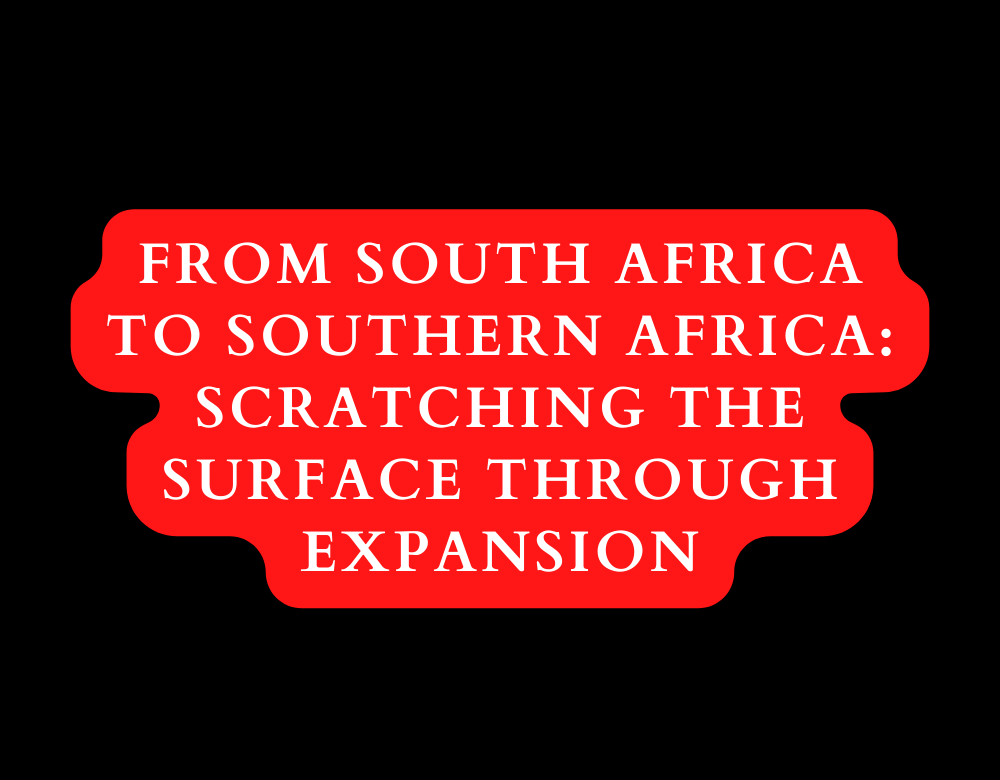From South Africa to Southern Africa: Scratching the Surface through Expansion

Without a doubt, Africa has surpassed initial levels of financial inclusion. Fintechs mastered the current narrative and leisure needs of individuals; created monster apps that could meet recurrent financial deliveries; lobbied governments into granting various access to financial services and without even trying, they forced banks into simplifying traditional services.
What Fintechs have offered Africa and Africans is unarguably applaudable. So why does the notion that ‘fintech has not scratched the surface’ remain?
The fintech industry is not new and has already proven that it can provide consumers with significant advantages. In contrast, modern technologies are more widely accessible, more reasonably priced, and—most importantly—globally scalable. In the past, development costs were high and required a lot of computing power. Fintechs should find it simpler to grow because of their scalability feature and lack of the banking traditional legacy systems and procedures. This feature combines with Africa’s developing market to produce enormous results.
However, while we have seen Fintechs’ massive results in Africa, it has been concentrated in more developed cities across the continent. More evident is the fact that Africa’s fintech space is underutilized. USA with population of 330 million has over 8,775 fintechs; UK with population of 68 million) has over 2,500 fintechs while Africa with 1.2 billion population has just 573 fintechs.
While South Africa seems to be getting along just fine, expanding its fintech reach across the country, other nations in the African sub-region suffer from lack of financial inclusion. Immature Fintechs are yet to integrate digital finance into societies. South Africa as the Sirius of the South can help drive financial inclusion in Southern Africa.
Navigating the Southern Region
The actual gains from the fintech industry come from moving bankless people to cashless and cryptocurrency users, encouraging financial and social inclusion, and creating jobs. These have been welcomed in South Africa. The banking industry in South Africa has adequate capital and has maintained capital adequacy and liquidity ratios that are substantially above the minimum legislative standards.
With over 1000 financial service providers, over 90% of South Africans are financially included. Per Disrupt Africa’s 2022 South Africa Startup Ecosystem Report, the South Africa’s startup ecosystem led the way in exit mergers and acquisitions (M&As). Refinitiv Data says that in the first half of 2021, South African mergers and acquisitions raked in $52 billion (R760.8 billion) from a total of 169 deals.
Most have these deals had seen South African startups leave the region rather than expand to other countries across the sub-region. Since 2015, over one-third of acquisitions in the African tech space have involved South African companies. While the country enjoys massive financial service overflow, neighbouring Madagascar (45%) Zambia (69%) and Botswana (68%) are yet to tick all the boxes; leaving financially excluded in the country at over 30%.
Stitch is yet to expand to any country in the South (operating in South Africa and Nigeria). Save NedBank and Absa, South Africa’s biggest Fintechs are yet to establish themselves across the sub-region. If the Southern Africa Fintech space is going to scratch the surface in a short-run, then it will take the diffusion of tech and startups from the most developed country in the region.
